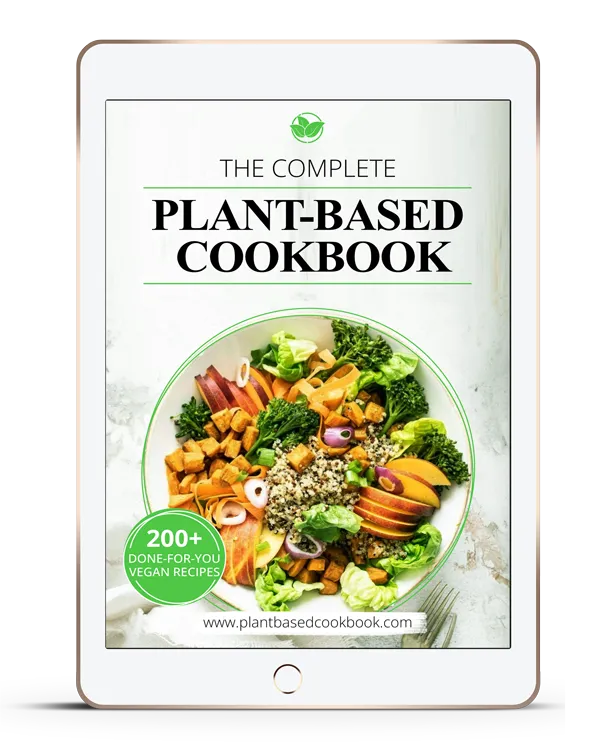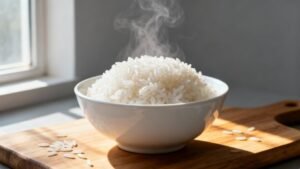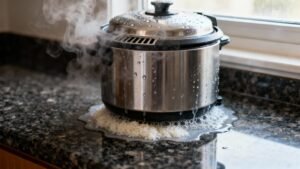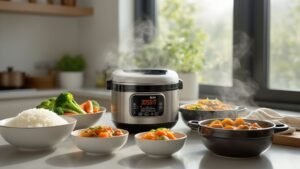I've often wondered if the true value of a pressure cooker lies not in its cooking ability, but in its locking mechanism. After testing dozens of models and experiencing a few close calls in my kitchen, I'm convinced that a cooker's locking lid is its most indispensable safety feature. From basic mechanical locks to sophisticated electronic systems, these protective barriers make the difference between a peaceful dinner prep and potential disaster. Let me show you why this matters so much.
Table of Contents
ToggleUnderstanding the Locking Mechanism Design
Three key components work together to create a secure locking mechanism in modern cookers: the lock bar, the flexible metallic liner, and the innovative cam mechanism. The ideal material selection makes these parts work seamlessly Proper orientation of the lid remains critical for the locking system to function correctly. The lock bar engages with a threaded rod on the spindle, while the metallic liner acts as a diaphragm to create a perfect seal. What I love most is how the perfect cam geometry allows the locking arm to rotate through 180 degrees, giving you complete control over the opening and closing process. This precise engineering is similar to how temperature sensors in rice cookers ensure accurate cooking results by detecting minor changes in temperature and moisture levels.
The whole system's brilliantly designed – you'll feel the difference in how smoothly it operates, plus you've got that extra peace of mind knowing the safety mechanism won't let you open the lid until pressure's fully released.
Safety Features of Pressure-Sealed Lids
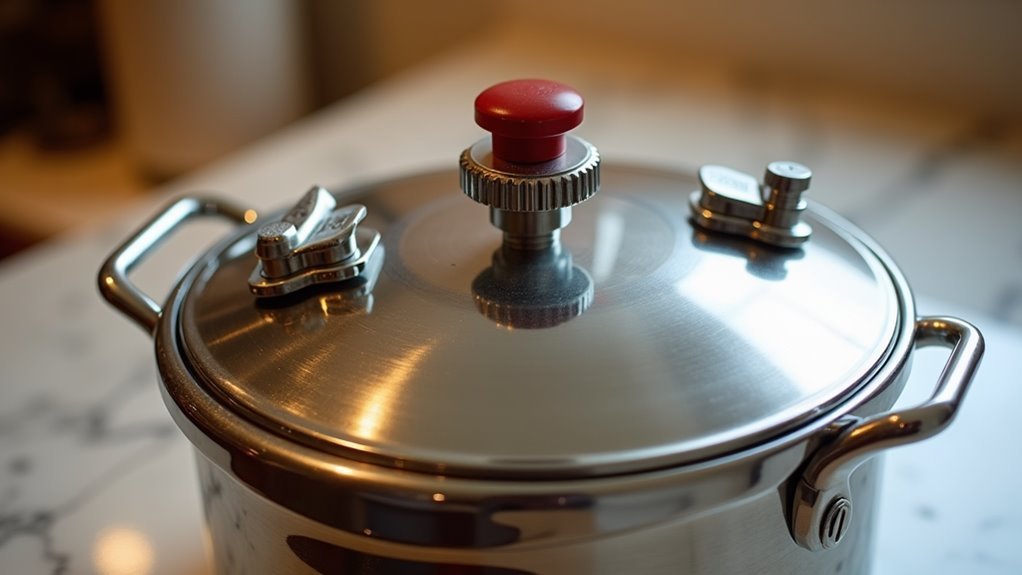
Modern pressure cookers incorporate four essential safety features that make them incredibly reliable for everyday cooking. I'm excited to show you how these amazing devices keep you safe while giving you the freedom to cook confidently These advanced designs have made pressure cookers considerably safer than models from the 1980s.
Regular maintenance, such as proper cleaning and de-scaling, is also crucial for ensuring the longevity of your kitchen appliances, including rice cookers.
| Safety Feature | What It Does For You |
|---|---|
| Auto-Lock System | Prevents lid opening under pressure |
| Visual Indicators | Shows when it's safe to open |
| Pressure Control | Regulates working pressure levels |
| Smart Detection | Monitors pre-heating precautions |
You'll love how these cookers watch out for over-tightening consequences with their silicone gaskets that naturally expand to release excess pressure. The lid's mechanical locking system works even without power, while multiple safety valves guarantee you're protected from any over-pressurization. It's like having a smart kitchen assistant that's always looking out for your safety
Benefits of Steam Control Technology
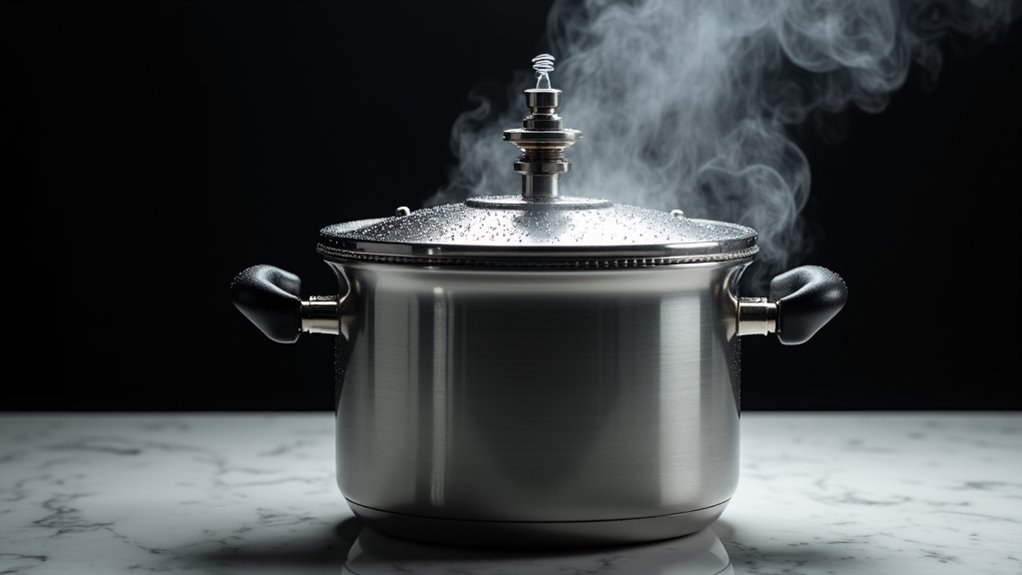
Since cooking with steam has revolutionized home cooking, I'm thrilled to show you how steam control technology can transform your culinary experience. The built-in steam generator delivers precise cooking performance while maintaining optimal moisture levels. The precise control over temperature and moisture means you'll achieve consistent cooking quality every time, while preserving all those crucial nutrients and natural flavors you love.
I've found that efficient food preparation becomes second nature with steam control – you can cook multiple dishes simultaneously without flavors mixing For example, using a rice cooker as a steamer allows for healthy and efficient cooking of various foods, including vegetables and meat.
What I really love is how versatile these systems are. Whether you're baking bread, roasting a chicken, or reheating yesterday's dinner, the steam control keeps everything perfectly moist and delicious. Plus, with user-friendly controls and preset programs, you'll master your steam cooking adventures in no time
Preventing Kitchen Accidents and Spills
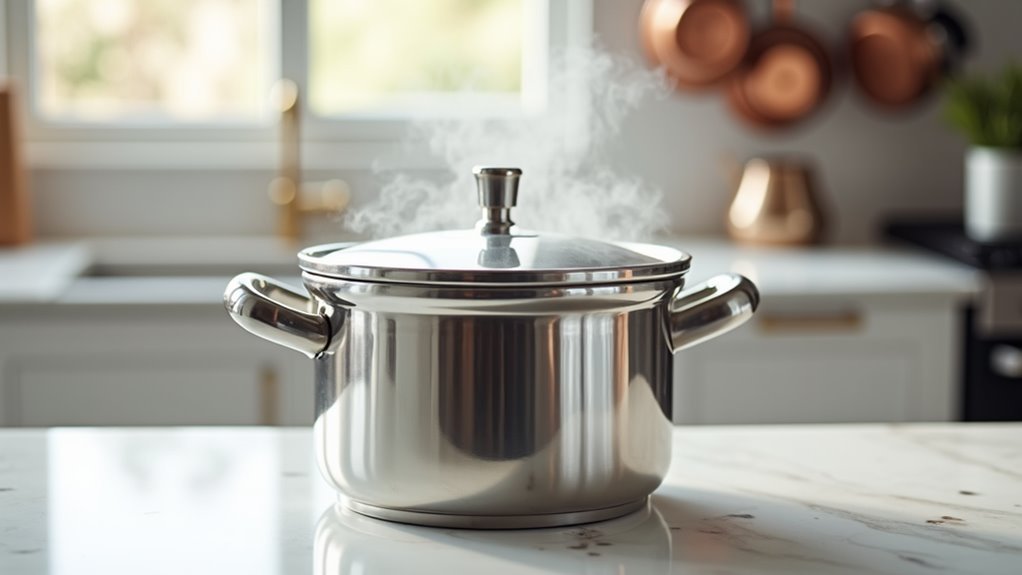
Safety in the kitchen starts with understanding the most common risks and knowing how to prevent them. I'm passionate about preventing hot liquid spills because they're one of the leading causes of kitchen injuries. By keeping pot handles turned inward and using oven mitts consistently, you'll dramatically reduce your risk of accidents.
Avoiding clutter on countertops isn't just about looking organized – it's essential for safety. I always make sure to clear a dedicated space near my cooker for setting down hot pans. You'll feel more confident knowing you have a safe spot to place things when you need to act quickly. Using a stable cutting board helps prevent dangerous slips while chopping ingredients. Properly measuring the water-to-rice ratio is also crucial to avoid boil-overs and maintain kitchen safety.
Remember, statistics show that unattended cooking causes 37% of home fires, so staying focused while cooking is your best defense against accidents.
Maintenance of Lid Locking Systems
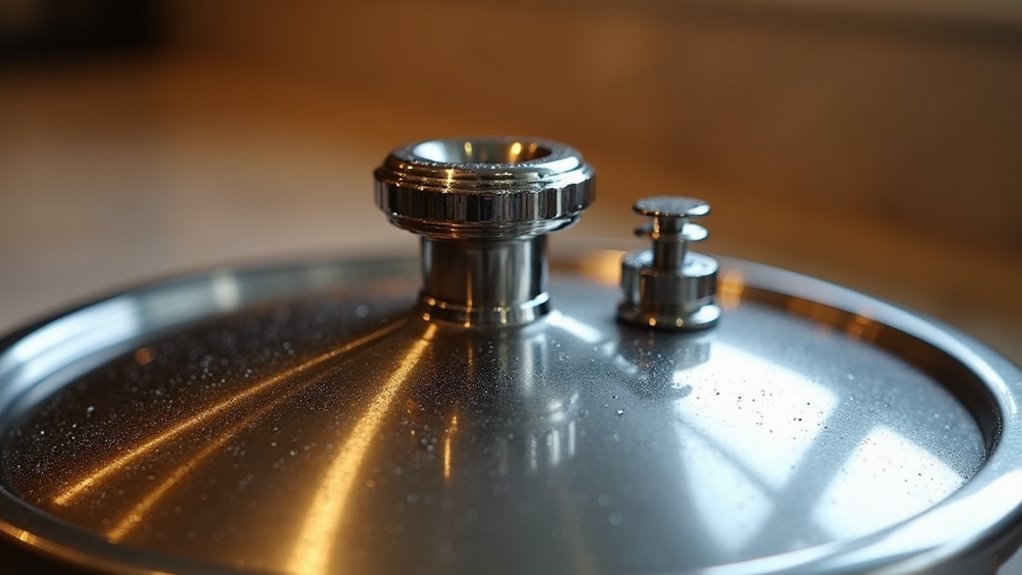
Every cooker lid locking system needs regular attention to stay in top shape. I can't stress enough how vital lid pressure monitoring is to your cooking success. By following proper lubrication schedules and maintaining the gasket, you'll keep your cooker running smoothly and safely. I've found that regular maintenance isn't just about safety – it's about giving you the freedom to cook without worry When closing the lid, make sure the red ball aligns within the width of the cross arm.
- Check and lubricate key points every 30 days – your spindle shaft, locking collar, and ball bearing will thank you. Regular maintenance also helps prevent issues similar to those solved by using non-stick liner sheets.
- Flip that gasket every 90 days to maintain a perfect seal.
- Keep the retaining pin clean and well-oiled to prevent sticking.
Trust me, when you take care of these simple maintenance tasks, you'll notice the difference in how effortlessly your lid operates. Plus, you'll avoid those frustrating steam leaks that can ruin your cooking. Proper maintenance extends the lifespan of your cooker, much like how using inner pot protectors can extend the life of your rice cooker.
Choosing the Right Lock-Lid Cooker
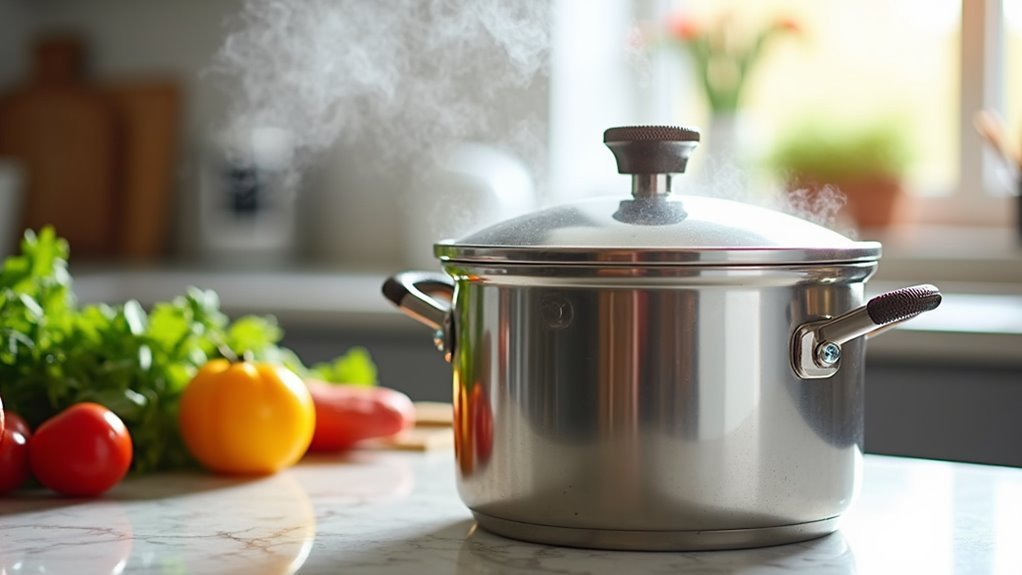
Picking out the perfect lock-lid cooker can seem challenging at first, but I'll help break down exactly what you need to know. Look for models with a reliable release pressure feature and clear temperature indicators – these are non-negotiable for your safety and peace of mind. The sealing ring expands automatically when the lid closes to create a secure cooking environment.
I always recommend choosing stainless steel models with UL certification, as they're built to last and won't let you down. Make sure the cooker has an automatic locking mechanism and overheat protection – you don't want to worry about accidents while you're cooking up a storm in your kitchen.
The best part? Today's cookers come with multiple cooking functions, so you're free to experiment with different recipes. Remember to check the size and warranty before making your final choice.
Frequently Asked Questions
Can I Use My Locking Lid Cooker in High-Altitude Locations?
I'll help you adjust your pressure settings and regulate cook times for high-altitude cooking. You can use your locking lid cooker safely, just remember to increase cooking time by 5% per 1000 feet above 2000.
What Happens if the Pressure Release Valve Gets Blocked During Cooking?
I'll warn you – a blocked pressure valve can cause sudden pressure buildup, creating dangerous safety hazards. You'll risk explosions and hot food ejection. Turn off heat immediately if this happens.
Are Replacement Locking Mechanisms Available for Older Cooker Models?
I can help you find replacement locks for older cookers, though I recommend regular pressure valve checks. Many models support DIY locking lid installation, but guarantee compatibility before ordering parts.
Can I Store Leftover Food in the Cooker With Lid Locked?
I recommend moving your leftovers to proper containers and storing them in your refrigerator at 40°F or below. Don't keep food in the cooker – it's not designed for safe temperature monitoring.
How Long Do Rubber Gaskets Typically Last Before Needing Replacement?
I recommend replacing gaskets every 5-10 years with proper maintenance, though some materials last longer. I'll help you guarantee airtight seals by checking for wear and tear regularly.
Conclusion
I've got to tell you, after diving deep into the world of locking lids, I'm convinced they're the unsung heroes of kitchen safety. While some might think I'm overly enthusiastic about a simple lid, I'm not letting my pressure cooker become a kitchen missile! Trust me, you'll want to embrace these safety features, maintain your locks, and keep your cooking adventures where they belong – in the pot, not on your ceiling.


